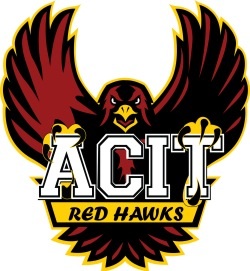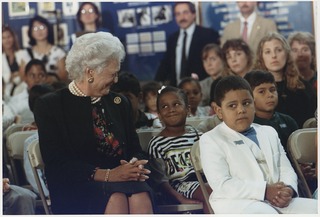
A primary school, elementary school, or grade school is a school for primary education of children who are 4 to 10 years of age. Primary schooling follows preschool and precedes secondary schooling.

The North American Industry Classification System or NAICS is a classification of business establishments by type of economic activity. It is used by governments and business in Canada, Mexico, and the United States of America. It has largely replaced the older Standard Industrial Classification (SIC) system, except in some government agencies, such as the U.S. Securities and Exchange Commission (SEC).
The Standard Industrial Classification (SIC) was a system for classifying industries by a four-digit code as a method of standardizing industry classification for statistical purposes across agencies. Established in the United States in 1937, it is used by government agencies to classify industry areas. Similar SIC systems are also used by agencies in other countries, e.g., by the United Kingdom's Companies House.

The following outline is provided as an overview of and topical guide to academic disciplines:
The Carnegie Classification of Institutions of Higher Education, or simply the Carnegie Classification, is a framework for classifying colleges and universities in the United States. It was created in 1970 by the Carnegie Foundation for the Advancement of Teaching. It is managed by the American Council on Education.
This is an index of education articles.

Science, technology, engineering, and mathematics (STEM) is an umbrella term used to group together the distinct but related technical disciplines of science, technology, engineering, and mathematics. The term is typically used in the context of education policy or curriculum choices in schools. It has implications for workforce development, national security concerns, and immigration policy, with regard to admitting foreign students and tech workers.
The Association of Technology, Management and Applied Engineering (ATMAE) sets standards for academic program accreditation, personal certification and professional development for educators and industry professionals involved in integrating technology, leadership and design.
Industrial technology is the use of engineering and manufacturing technology to make production faster, simpler, and more efficient. The industrial technology field employs creative and technically proficient individuals who can help a company achieve efficient and profitable productivity.

The Institute of Education Sciences (IES) is the independent, non-partisan statistics, research, and evaluation arm of the U.S. Department of Education. IES' stated mission is to provide scientific evidence on which to ground education practice and policy and to share this information in formats that are useful and accessible to educators, parents, policymakers, researchers, and the public. It was created as part of the Education Sciences Reform Act of 2002.
The Integrated Postsecondary Education Data System (IPEDS) is a system of interrelated surveys conducted annually by the National Center for Education Statistics (NCES), a part of the Institute for Education Sciences within the United States Department of Education. IPEDS consists of twelve interrelated survey components that are collected over three collection periods each year as described in the Data Collection and Dissemination Cycle. The completion of all IPEDS surveys is mandatory for all institutions that participate in, or are applicants for participation in, any federal financial assistance program authorized by Title IV of the Higher Education Act of 1965, as amended.

The Atlantic County Institute of Technology (ACIT) is a four-year countywide vocational public high school serving students in ninth through twelfth grades from Atlantic County, New Jersey, United States, as part of the Atlantic County Vocational School District. ACIT is located on a 58-acre (230,000 m2) campus in the Mays Landing area of Hamilton Township. The school was constructed in 1974 and underwent a major renovation in 1994 and 2009-2011.
Technology management is a set of management disciplines that allows organizations in managing their technological fundamentals to create customer advantage. Typical concepts used in technology management are:

The University of Management and Technology (UMT) is a private for-profit online university headquartered in Arlington, Virginia. It was founded in 1998 and offers associate, bachelor's, master's, and doctoral degrees as well as certificate programs.

Literacy in the United States was categorized by the National Center for Education Statistics into different literacy levels, with 92% of American adults having at least "Level 1" literacy in 2014. Nationally, over 20% of adult Americans have a literacy proficiency at or below Level 1. Adults in this range have difficulty using or understanding print materials. Those on the higher end of this category can perform simple tasks based on the information they read, but adults below Level 1 may only understand very basic vocabulary or be functionally illiterate. According to a 2020 report by the U.S. Department of Education, 54% of adults in the United States have English prose literacy below the 6th-grade level.
Applied engineering prepares graduates to apply mathematical, scientific,technology and engineering principles and methods to manage business functions. Includes instruction in engineering management, project management, production and operations management, systems integration and quality control, management of technical personnel and application of system design, execution of new product designs, improvement of manufacturing processes. https://nces.ed.gov/ipeds/cipcode/cipdetail.aspx?y=56&cipid=93052#:~:text=Title%3A%20Applied%20Engineering. 14.0103 2020 CIP Code]

In the United States, elementary schools are the main point of delivery of primary education, for children between the ages of 4–11 and coming between pre-kindergarten and secondary education.
Huntington Junior College (HJC) is a private for-profit junior college in Huntington, West Virginia. It was founded in 1936 and its campus is currently located in the former Cabell County Public Library building. The college offers six associate degree programs as well as stackable certificates and micro-credentials. It is accredited by the Higher Learning Commission.
M.E.T.S. Charter School was a seven-year comprehensive public charter middle school / high school that serves students in sixth through twelfth grades in Hudson County and Essex County of New Jersey, United States. The M.E.T.S. Charter School had two campuses, one in Jersey City and one in Newark. The school operates under the terms of a charter granted by the New Jersey Department of Education. M.E.T.S. Charter School was an Early College Preparatory School that utilizes research-based instructional practices to achieve student proficiency in mathematics, engineering, technology, and science. M.E.T.S. Charter School encouraged students to take college level courses and graduate from high school within four years with up to 60 college credits and/or an associate degree. Postsecondary success was promoted by prioritizing admission to a four-year college or university for each member of the graduating class.








